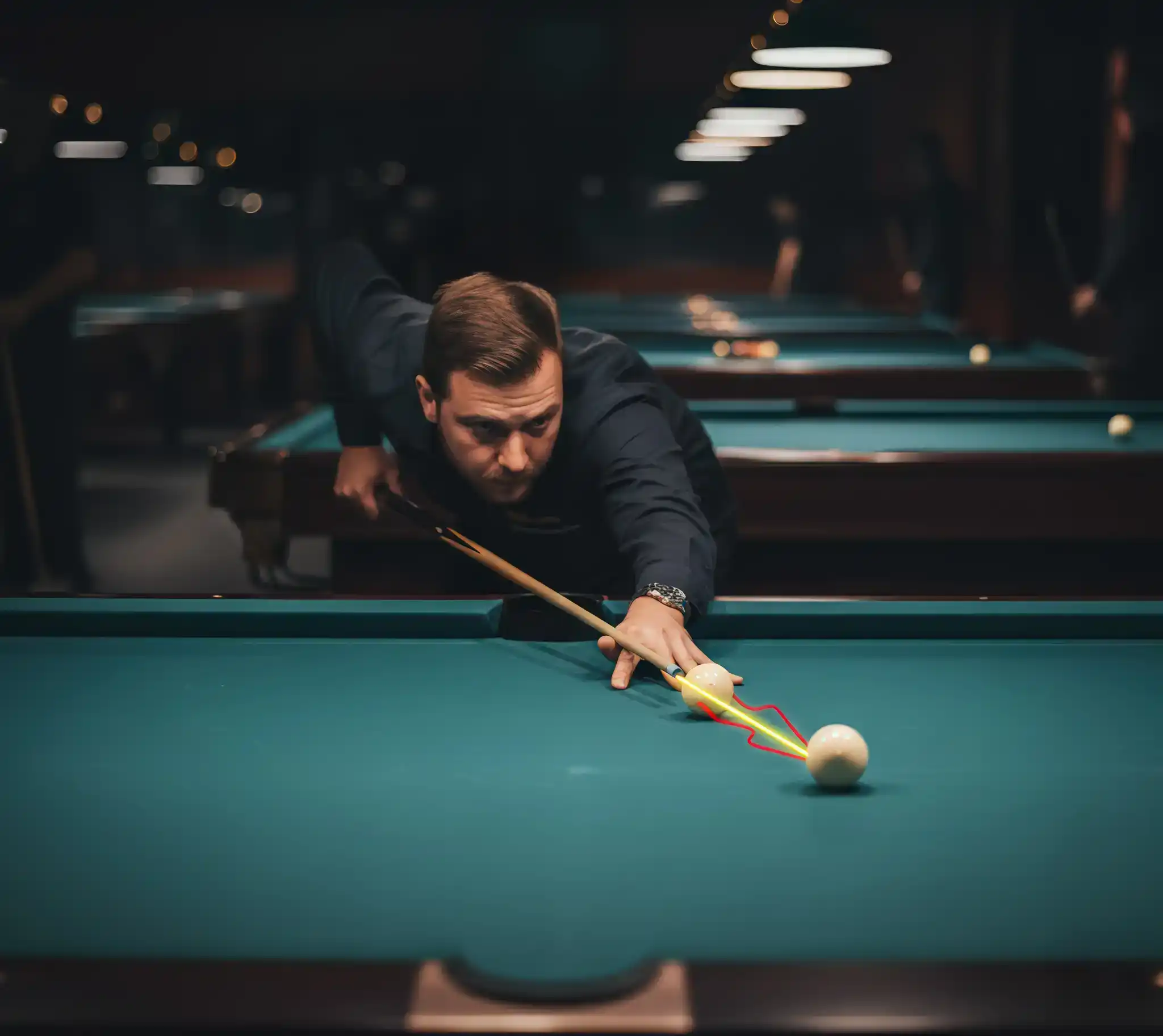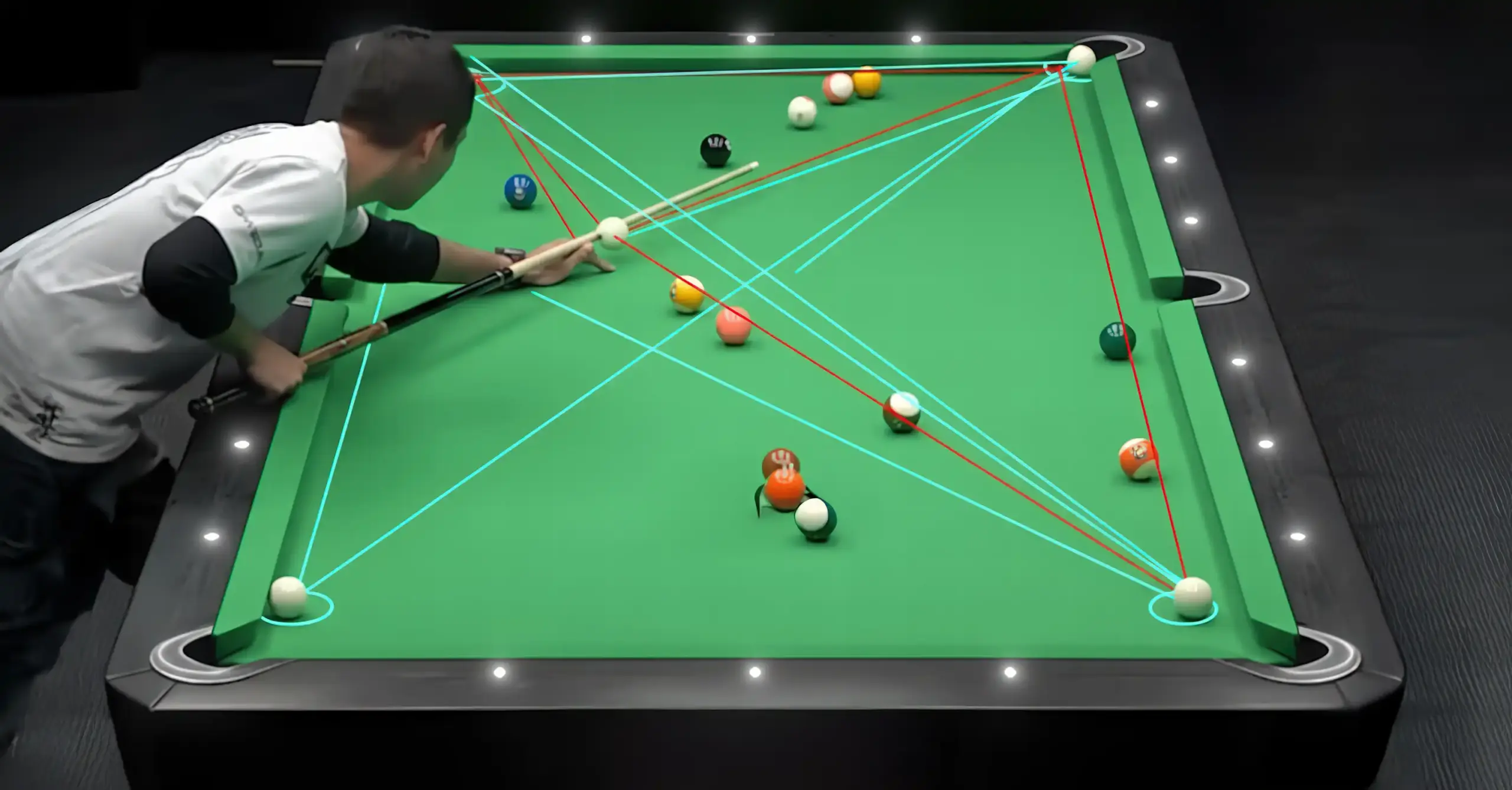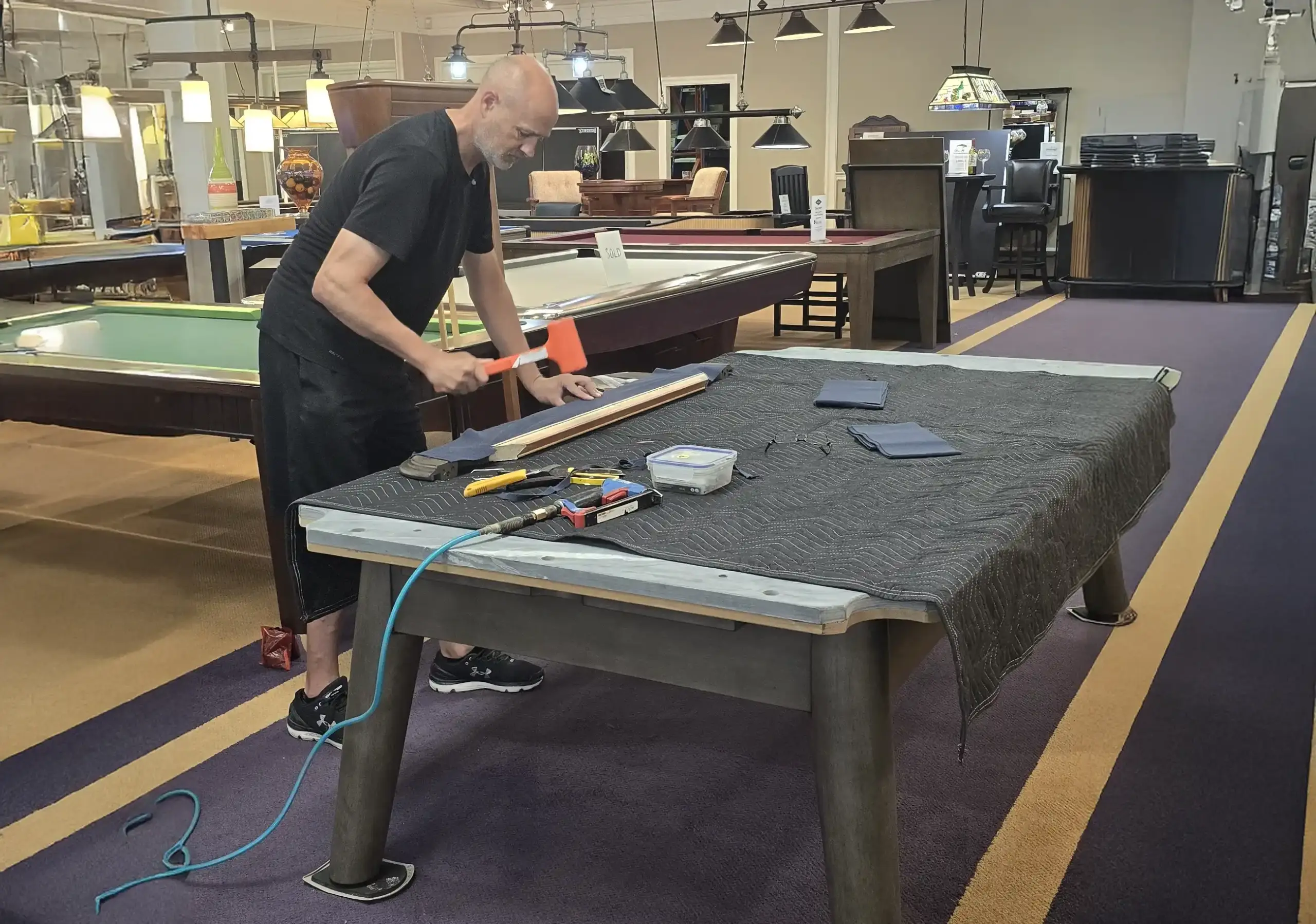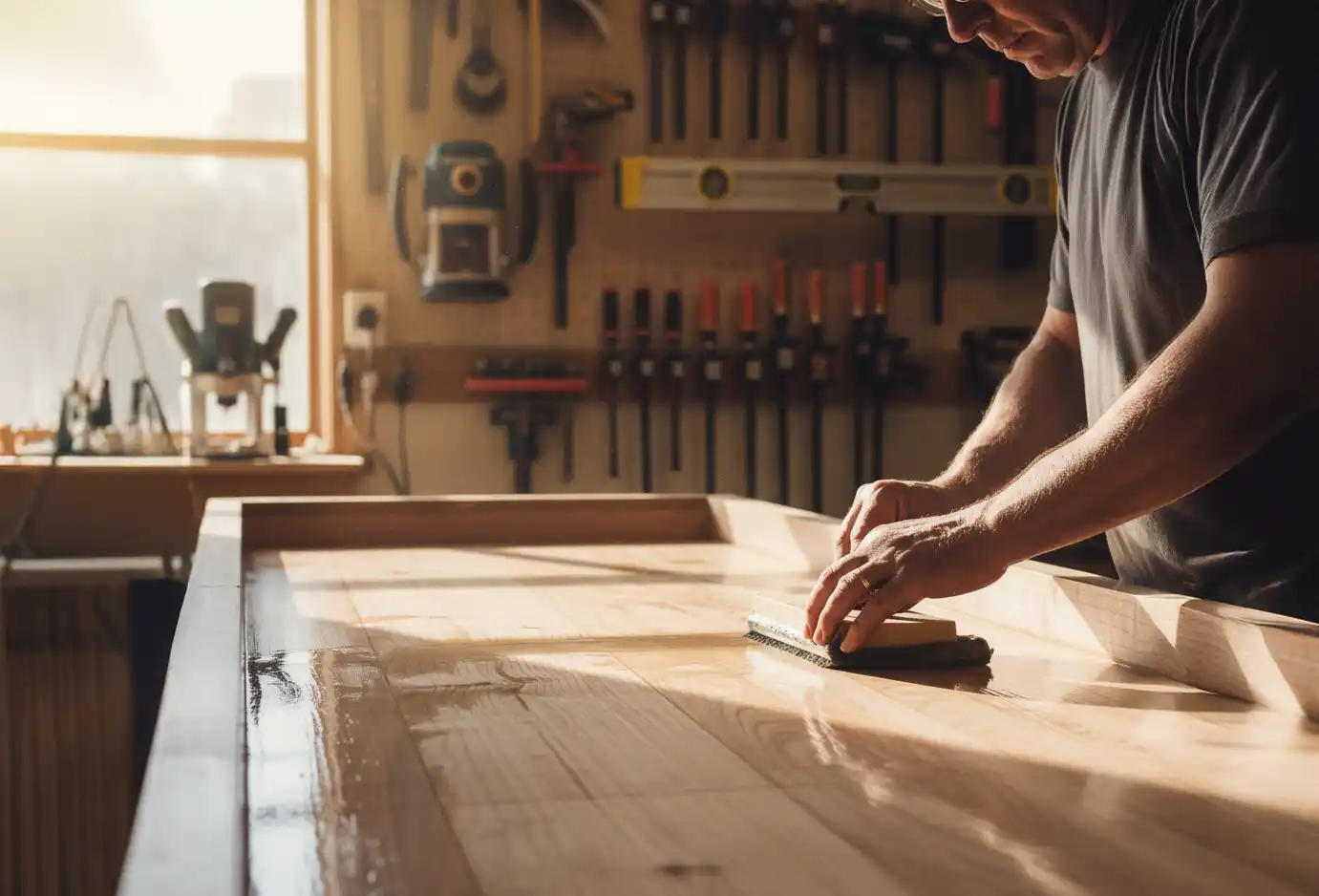Introduction
Every pool player knows the frustration. You see the shot, you feel confident, you pull the trigger, and the object ball rattles in the jaws of the pocket—or misses entirely. You watch professionals make impossible cuts with seemingly effortless grace and wonder, “What’s their secret?” The answer is rarely natural talent alone. It’s a system. Relying on “feel” without a foundation is a recipe for inconsistent play, where you alternate between moments of brilliance and baffling misses. True consistency comes from adopting a repeatable, logical process for every single shot. This guide is your blueprint to move beyond guesswork. We will deconstruct the most effective pool table aiming systems, provide a roadmap for beginners to start, and show you how to diagnose the common mistakes that are holding your game back.
Key Takeaways
- A systematic approach to aiming is the foundation of consistency, replacing the unreliable nature of just “feel.”
- The Ghost Ball aiming system is the most intuitive and effective starting point for any new or developing player.
- Diagnosing why you miss—such as moving during your stroke or misjudging the cue ball’s path—is as crucial as learning how to aim.
- Your equipment, especially a low-deflection cue shaft and quality billiard balls, significantly impacts aiming and reduces unpredictable variables.
- Mastering an aiming system requires a dedicated practice plan focused on drills that build muscle memory and visual accuracy.
Why a System is Your Secret Weapon for Consistency
In billiards, precision is everything. The difference between potting a ball and leaving your opponent an easy shot can be less than a single degree of angle. An aiming system is a structured method for determining the precise line of a shot, ensuring you can pocket balls with repeatable accuracy.
Moving Beyond “Feel”: The Myth of Natural Talent
Many players believe the best shooters play purely on instinct or “feel.” The truth is that “feel” is simply a well-practiced system that has become subconscious after thousands of hours of repetition. For the rest of us, a conscious system provides a reliable framework. It removes the doubt and hesitation that lead to missed shots, giving you a clear plan of action every time you step up to the table.
What an Aiming System Can (and Cannot) Do for Your Game
An aiming system is a powerful tool, but it’s not a magic wand. It can give you the correct target and line for your shot, dramatically improving your potting percentage. However, it cannot compensate for flaws in your fundamentals. If your stance is unstable, your bridge is weak, or your stroke isn’t straight, you will miss even with perfect aim. A system works best when it’s built on a solid foundation of good mechanics. For more details on choosing the right equipment, consult a comprehensive pool table buyer’s guide.
The 3 Core Aiming Systems Every Player Must Know
While there are dozens of aiming methods, most are variations of three core concepts. Mastering these will give you the tools to handle over 90% of the shots you’ll ever face.
System 1: Ghost Ball Aiming (Your Starting Point)
What it is and Why it’s Perfect for Beginners
The Ghost Ball system is the most intuitive and widely taught aiming method. The concept is simple: you visualize an imaginary “ghost” cue ball frozen in the exact position it needs to be to make contact with the object ball and sink it. You then simply aim your actual cue ball to hit the center of that ghost ball.
Step-by-Step: How to See the Ghost Ball
First, draw an imaginary line from the center of the target pocket through the center of the object ball. The spot where this line emerges on the far side of the object ball is your contact point. Now, place your imaginary ghost ball directly behind that contact point, touching it. This ghost ball is your true target.
Actionable Drill: The “Ghost Ball Pocket” Drill
Place an object ball a few inches from a corner pocket. Set up for a straight-in shot. Before you shoot, walk around the table and place a chalk cube or another ball at the exact ghost ball position. Walk back to your shooting position and see how it feels to aim for that target. Remove the marker and try to re-visualize it before shooting.
System 2: Contact Point to Contact Point (The Intuitive Method)
How it Differs from Ghost Ball
This method is a slight mental shift from Ghost Ball. Instead of visualizing a whole ball, you focus only on two points: the contact point on the object ball and the corresponding contact point on the cue ball’s edge that must strike it. It requires a good understanding of how the cue ball’s width translates to the shot.
Visualizing the Shot Line
Many players find this system more direct. After identifying the contact point on the object ball, they visualize the line back to the cue ball and align the edge of the cue ball with that line. This method helps train your brain to see the required overlap between the two balls for any given cut angle.
System 3: Center-to-Edge or “CTE” (The Geometric Approach)
A Simple Explanation of CTE
CTE is a more technical system that uses the geometry of the balls themselves. For many standard cut shots, aiming the center of your cue ball at the perceived outside edge of the object ball will pocket the shot. It provides a more tangible target than the Ghost Ball’s empty space.
When to Use CTE for Uncanny Accuracy
CTE works exceptionally well for cut shots between 15 and 45 degrees. It can feel less intuitive at first, but once you learn to trust the geometry, it can make difficult angles feel almost automatic. It’s a powerful tool for players who prefer a more mechanical approach over pure visualization.
Diagnosing Your Misses: Common Aiming Mistakes and How to Fix Them
If you’re missing shots despite using a system, the problem likely lies in your fundamentals. Here are the most common culprits.
Mistake #1: Moving Your Head or Body During the Stroke
Even a tiny, subconscious movement of your head, shoulders, or hips during your final stroke can send the cue in a different direction than you intended. Your body must remain perfectly still from your final warm-up stroke through the follow-through.

Mistake #2: Not Aligning Your Vision Center Correctly
Every person has a dominant eye. For perfect aim, your dominant eye, chin, and cue should form a straight vertical line. If you are aligned incorrectly, the shot you see is not the shot you will actually hit. To find your vision center, stand back from the shot and look at the contact point with both eyes, then get down into your stance, ensuring your dominant eye is over the cue.
Mistake #3: Misjudging Cue Ball Deflection and Throw
When you use sidespin (english), the cue ball doesn’t travel perfectly straight; it deflects slightly off the line of your cue. This is called cue ball deflection or “squirt.” Furthermore, friction between the balls can push the object ball slightly offline. This is called “throw.” You must learn to adjust your aim to compensate for these effects, especially on faster or slower cloths.
Pro Tip: How to Record Yourself to Find Flaws
The best way to diagnose physical flaws is to see them. Set up your smartphone on a tripod and record yourself shooting from behind and from the side. You’ll be amazed at the subtle movements and alignment issues you can spot and correct.
Advanced & Pro-Level Aiming Systems
Once you’ve mastered the fundamentals, you can explore more complex systems to handle specific situations.
What is the DAM (Dr. Dave’s Aiming Method)?
Developed by Dr. Dave Alciatore, this is a highly precise method that involves finding specific visual references on the object ball to aim for. It’s a more detailed version of basic contact point visualization and is excellent for players seeking ultimate accuracy. For those interested in the physics and geometry behind these shots, Dr. Dave’s website is an invaluable resource.
Fractional Aiming for Mathematical Players
This system involves visualizing the shot as a fraction—aiming to cover a quarter of the object ball, a half, three-quarters, etc. It requires a keen eye but can be incredibly effective for players who think in a mathematical and analytical way.
Parallel Aiming for Long, Thin Cuts
A useful technique for very thin cuts, this method involves finding a parallel line to the shot line that is easier to see. For example, you might aim a line from the cue ball to a diamond on the rail that is parallel to the actual line required to pocket the object ball.
Does Your Equipment Matter? (Yes, A Lot)
Your aiming system is only as good as the equipment you use. High-quality gear provides consistency, making your aiming calculations far more reliable.
How Low-Deflection Shafts Change Your Aim
A low-deflection (LD) shaft is engineered to minimize cue ball deflection or “squirt” when using english. This is a game-changer. With an LD shaft, you can aim much closer to your intended target, even with sidespin, making your shots more predictable and your aiming more straightforward. These are one of several essential pool table accessories that can elevate your game.
The Impact of Table Cloth Speed on Your Shots
The speed and condition of the billiard cloth affect how much the object ball is “thrown” offline. A fast, slick cloth like Simonis 860 will have minimal throw, meaning the ball will travel truer to the contact line. A slower, thicker felt will increase throw, requiring you to adjust your aim accordingly.
Are Pro-Level Aramith Balls Easier to Aim With?
Absolutely. Professional-grade balls like Aramith are manufactured to exacting standards of roundness, weight, and density. This ensures they roll true and react perfectly off each other every time. Inconsistent balls lead to inconsistent results, no matter how well you aim.
Your First 30 Days: A Practice Plan for Mastering an Aiming System
Adopt a structured approach to learning. Don’t just play games; dedicate time to focused practice.
| Week | Focus | Key Drills and Objectives |
| Week 1 | Choosing Your System & Mastering Basics | Commit to the Ghost Ball system. Practice the “Ghost Ball Pocket” drill for 30 minutes each session to train visualization. |
| Week 2 | Applying the System to Cut Shots | Use Ghost Ball visualization for various easy cut shots. Before shooting, confirm the target by walking to the ghost ball position. |
| Week 3 | Adjusting for Shot Speed | Practice the same cut shots with soft, medium, and firm strokes. Learn to adjust aim to compensate for “throw” at different speeds. |
| Week 4 | Real-Game Integration | Play practice games, applying the full Ghost Ball visualization process to every shot. Focus on the process, not just the outcome. |
Frequently Asked Questions About Aiming Systems
What aiming system does Shane Van Boening use?
Top professionals like Shane Van Boening have practiced the core principles of Ghost Ball and contact point aiming for so many hours that it has become completely subconscious. They don’t think about a “system”; they just see the shot because their “feel” is built on a perfectly ingrained system. The World Pool-Billiard Association website features many pro players who have achieved this level of mastery.
Should I switch aiming systems?
No. The biggest mistake players make is “system hopping.” Pick one fundamental system, like Ghost Ball, and stick with it. Mastering one system is far more effective than being mediocre at five different ones.
How long does it take to learn an aiming system?
You can learn the basic concept in an hour. It takes about a month of consistent practice, like the -day plan above, to become comfortable and confident with it. True mastery, where the system becomes second nature, can take many months or even years.
Are there any apps or training aids that can help?
There are apps that can help you visualize angles and some training balls with markings that show you contact points. While these can be helpful for understanding the concepts, there is no substitute for time spent on a real table, building real muscle memory and visual acuity.
Conclusion
Moving from a player who relies on hope to one who relies on a system is the single biggest leap you can make in your pool game. By understanding the principles of core systems like Ghost Ball, diagnosing the flaws in your fundamentals, and appreciating the role of quality equipment, you create a repeatable process for success. Consistency on the pool table isn’t born from magic; it’s built, one structured, well-aimed shot at a time. The path to becoming a better player starts with your very next shot.
For expert advice on finding the perfect equipment to complement your game, contact Hallmark Billiards today.





